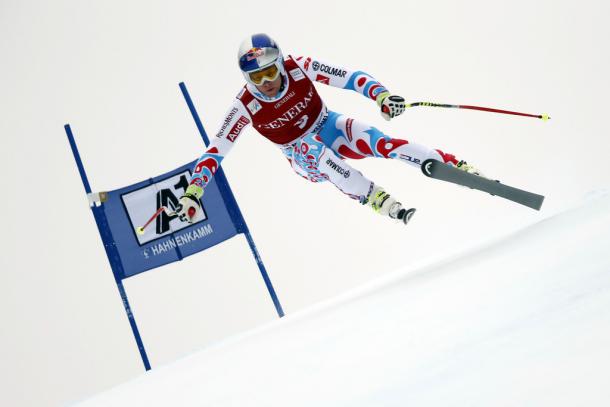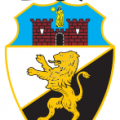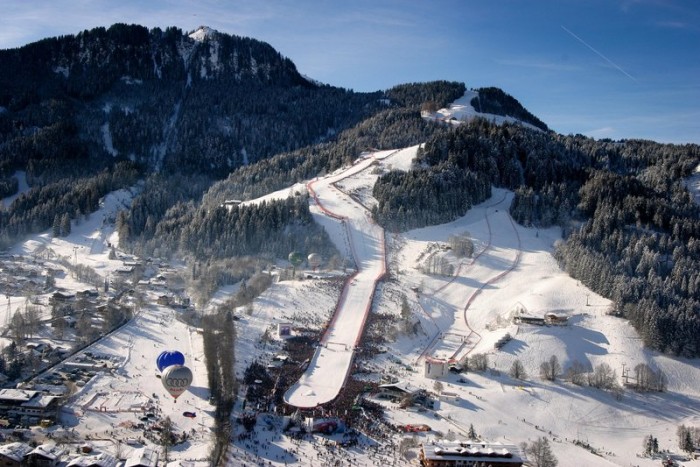The Men’s Alpine Skiing World Cup continues this weekend with its biggest classic, the Hahnenkamm races in Kitzbühel, Austria, held since 1931. The high prestige of the event is also reflected in the prize money; instead of the usual World Cup race winner’s prize money of 41,500 Swiss francs (41,400 U.S. dollars), the winners of the downhill and the slalom earn 70,300 euros (76,700 U.S. dollars), the winner of the super-G earns 52,725 euros (57,500 euros), and the winner of the combined earns 45,325 euros (49,400 U.S. dollars).
The weekend kicks off with the super-G race on Friday at 11:45 am local time (5:45 am Eastern time). The super-G race is also the speed leg of alpine combined with the slalom leg taking place in Friday afternoon at 4:45 pm local (10:45 am ET). The weekend continues with the downhill on Saturday and the slalom on Sunday.
Norway Leads The Podium Charge In Super-G
The overall World Cup leader Aksel Lund Svindal has dominated speed disciplines this season and is the leader also in the super-G World Cup. He must be the biggest favorite for the super-G race. Although Kitzbühel has been a fairly unsuccessful venue for the Norwegian, he won the super-G there in 2013.
The last super-G of the season in Val Gardena was Norway’s celebration; the “Attacking Vikings” swept the podium positions. Last season’s super-G World Cup champion Kjetil Jansrud was second in Val Gardena, and is one of Svindal’s main challengers in Kitzbühel. Still, he hasn’t been able to match Svindal’s performances so far and has lacked consistency, and that’s why he is only in fifth place in the super-G World Cup.
The Norwegian podium sweep in Val Gardena was completed by Aleksander Aamodt Kilde who is also third in the super-G World Cup, behind Svindal and injured Matthias Mayer. The 23-year-old prospect has finished all this season’s super-G races inside top 10. Yet with the old guns finding their form, it will be hard for Kilde to make podium again this season and to remain inside top three of the super-G standings.
Fourth of the super-G standings, Adrien Théaux of France, has shown good form during the past month. Although he hasn’t made the podium in super-G so far this season, the win of the Santa Caterina downhill, the third place of the Wengen combined, and the quickest time of Tuesday’s downhill training in Kitzbühel raise the expectations for the Kitzbühel super-G.
Another man who has found his form during the past month is Hannes Reichelt of Austria. Although he’s only 17th in the super-G standings, the second-places in the downhills of Santa Caterina and Wengen as well as Tuesday’s second-quickest downhill training run in Kitzbühel make last year’s super-G World gold medalist Reichelt one of the favorites in Friday’s super-G.
Previously a downhill specialist, Dominik Paris made last season his breakthrough in super-G and finished second in the super-G World Cup. He achieved his only win of the last season in the Kitzbühel super-G. This season hasn’t been as successful for the Italian; he’s only ninth in the super-G standings. Repeating last year’s win seems unlikely; however Paris must like Kitzbühel as he is also the 2013 downhill winner there.
Pinturault Aims For Third Combined Victory

Alexis Pinturault of France isn’t among the biggest favorites for the super-G race; the 10th of the last season’s super-G World Cup is still to achieve a top-30 finish and get points this season. However, he is one of the favorites for alpine combined. He has won the two combined races in Kitzbühel with the current format of one super-G and one slalom run. Finishing the super-G leg inside the top 30 is critical for him. The reverse starting order for the top 30 in slalom enables good slalom skiers like Pinturault make big leaps forward, while it’s hard to make progress on a worn-out slope after 30 starters.
Marcel Hirscher of Austria won this season a super-G race in Beaver Creek; however the course setting was unusually technical for a super-G and he got helped by weather conditions. His best super-G result in Kitzbühel is 44th so he isn’t among winner favorites in the super-G, though in combined he is. He has second and third places from the last two combined races in Kitzbühel. Like for Pinturault, it’s important for Hirscher to be in super-G inside the top 30 of those who are doing the combined. Hirscher if anybody knows the importance of that; getting to fresh slalom course as the 30th of the downhill leg, he turned a deficit of 3.16 seconds to the downhill leg leader Kjetil Jansrud into a win by 0.19 seconds at last year’s World Championships.
Jansrud achieved his career-first combined victory in Wengen last weekend. He must be one of the favorites also in Kitzbühel, as well as Wengen’s second-placed Svindal and third-placed Théaux. There’s a difference between the combined races of Wengen and Kitzbühel, though. In Wengen the speed leg is downhill, in Kitzbühel it is super-G. Technical specialists like Pinturault, Hirscher, or Ted Ligety are decent super-G skiers and speed specialists like Jansrud, Svindal, or Théaux can’t build as much gap in the super-G leg as they could have done in downhill.
Although a speed specialist, Carlo Janka of Switzerland may have his best podium chance in the combined. His best super-G result of the current season is an eighth place in Beaver Creek. In the Wengen combined, he was ninth after the downhill leg, yet showed great slalom pace that might have been enough even for the win had he been able to finish the run. However, Wengen had an unusual slalom slope this year, very easy compared to one of the most challenging slalom slopes in Kitzbühel.
The great weekend of Thomas Mermillod-Blondin in Wengen may easily have gone unnoticed. However the Frenchman achieved a rare feat in these days of specialized skiers, he finished all three races (combined, downhill, and slalom) on points. The fourth place of alpine combined showcased his versatility, even though his great slalom form in Wengen may have been due to an unusually easy slalom slope. In Kitzbühel, the combined format of super-G and slalom may not hurt Mermillod-Blondin as super-G has been a better discipline than downhill for him. However, it doesn't really help him either; he'd have a bigger advantage over technical specialists in downhill.









































